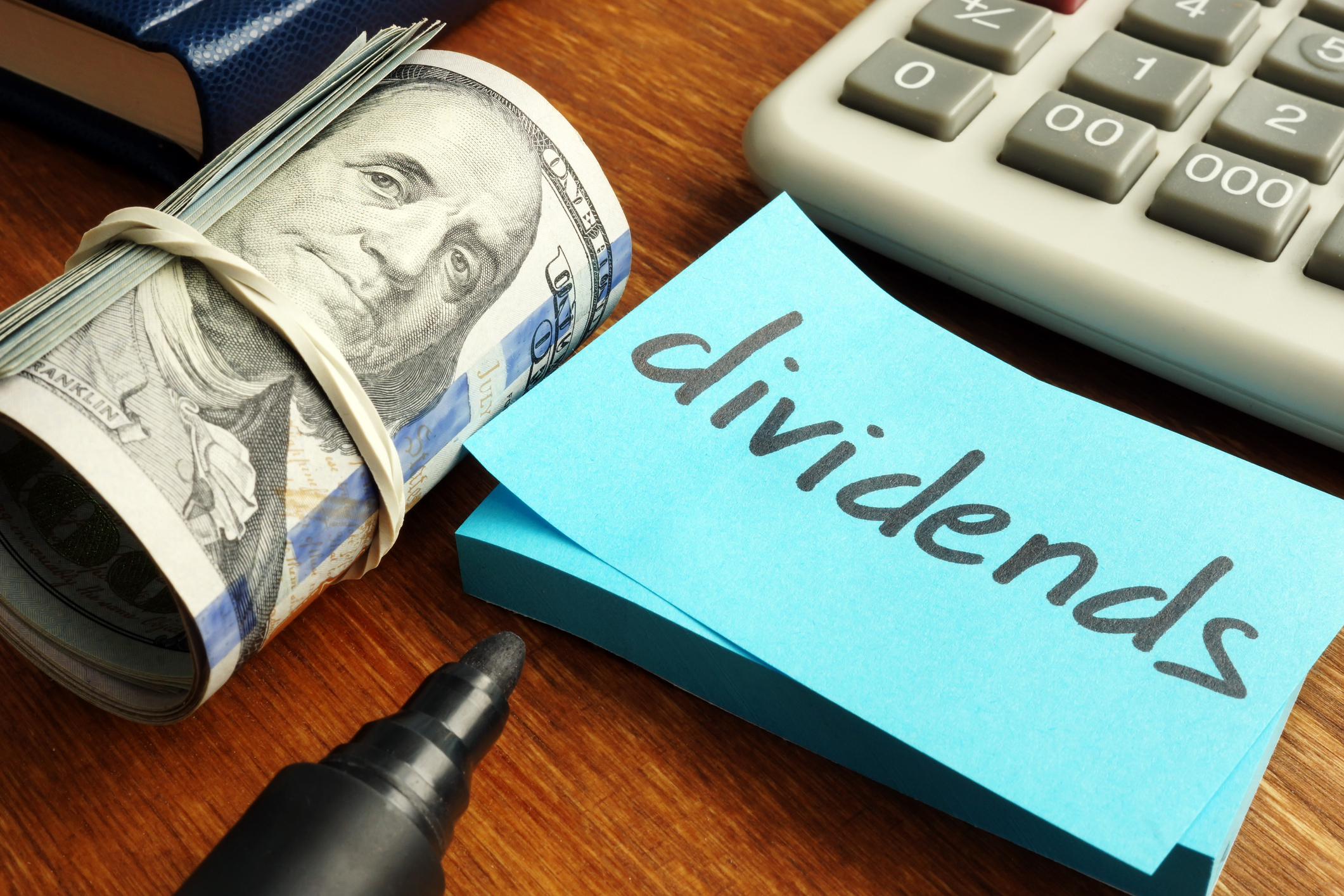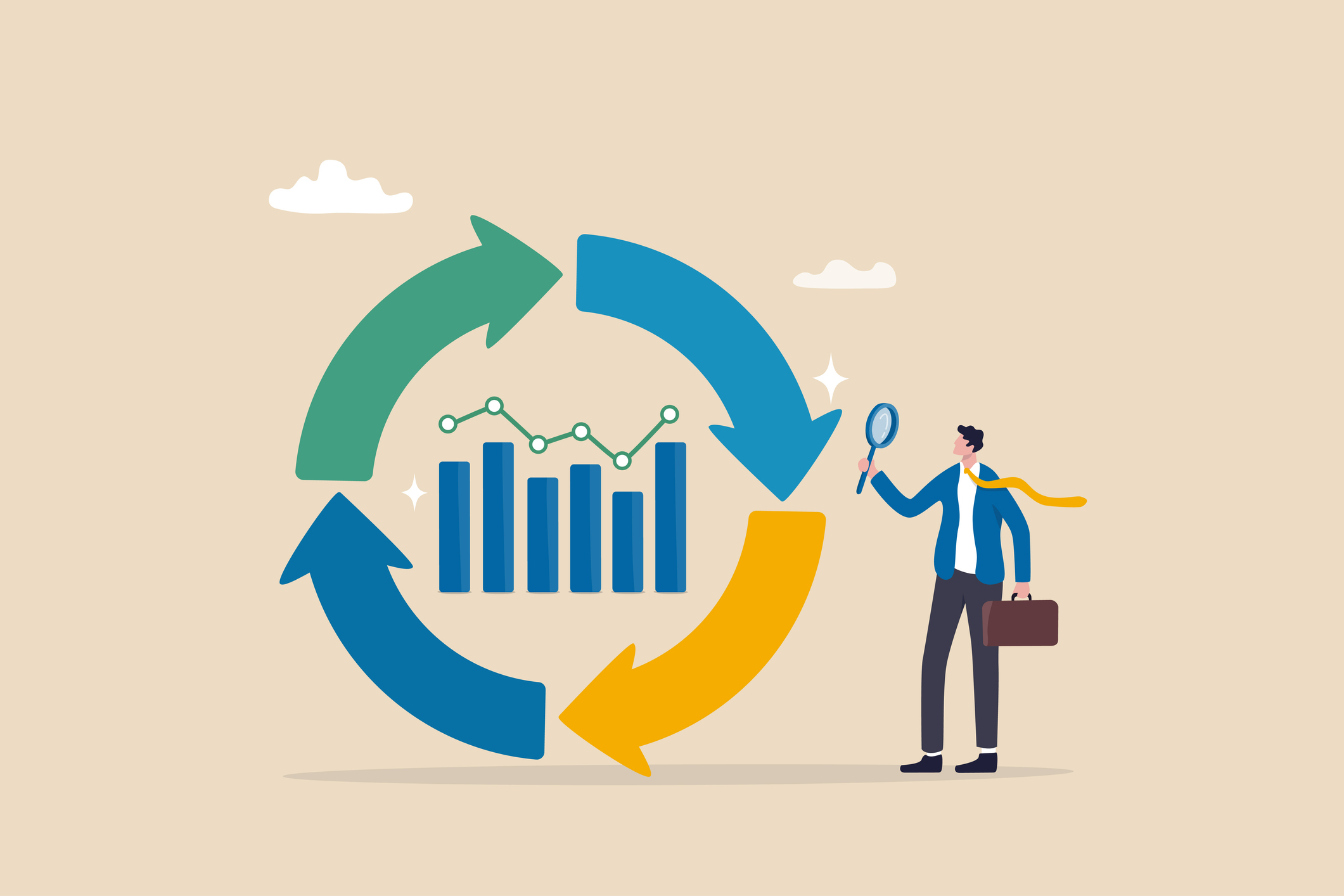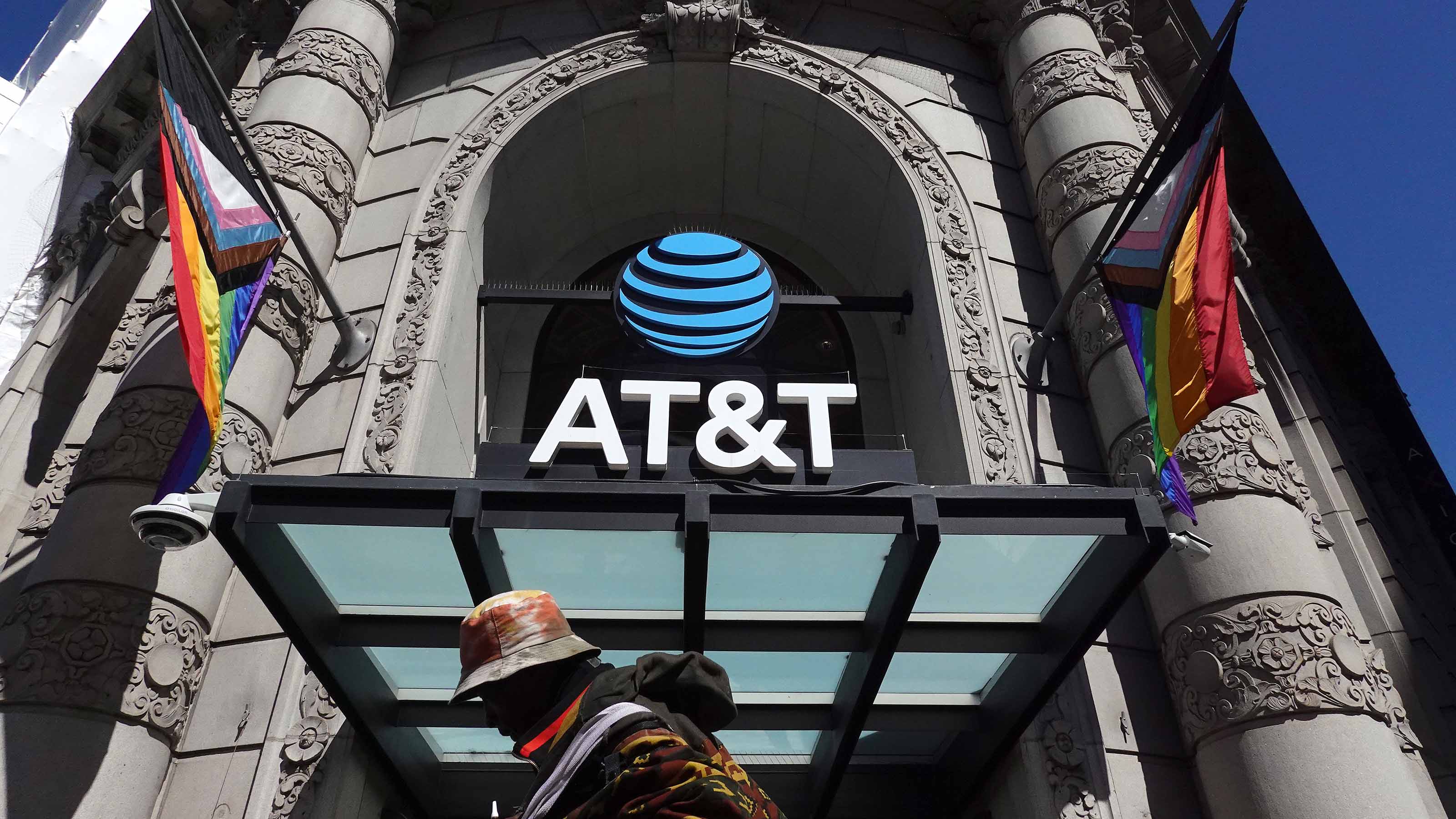What Are Dividend Stocks?
Dividend-paying stocks are wise additions to most portfolios. Here, we answer the question "what are dividend stocks" and explain how to find the best ones.


Investors are presented with many choices for creating income in their portfolios these days.
One way is to buy dividend stocks. Dividend stocks with rising payouts over time are especially attractive.
But what are dividend stocks? And why should you own them?

Sign up for Kiplinger’s Free E-Newsletters
Profit and prosper with the best of expert advice on investing, taxes, retirement, personal finance and more - straight to your e-mail.
Profit and prosper with the best of expert advice - straight to your e-mail.
"Dividend income is often overlooked amid gyrations in the stock market," writes John Eade, president and director of Portfolio Strategies at Argus Research. "But dividends are an important element of return."
Dividends provide ballast during periods of market uncertainty like we saw in 2022, when the Federal Reserve began aggressively hiking interest rates to bring down inflation.
Here, we answer the question "what are dividend stocks." And we review how dividend stocks differ from preferred stocks, bonds and money market funds.
We also discuss where investors can find the best dividend stocks.
How does a dividend stock work?
The law allows companies to pay out a portion of either their income or their retained earnings to shareholders. These distributions include dividends, which can be paid in cash, stock or other property.
Dividends are paid in two basic ways.
Preferred stock is a senior security that usually includes a fixed dividend rate based on its par value.
Dividends paid on common stock (or "ordinary" shares in overseas markets) are determined on a monthly, quarterly, semi-annual or annual basis.
Preferred stock dividends are paid before common stock dividends. This priority is one of the main benefits of preferred stock.
The board of directors of a publicly traded company will generally consider dividend policy on an annual basis.
In the U.S., public companies tend to pay out a consistent portion of earnings each quarter in the form of common stock dividends.
Management teams at healthy and growing businesses often demonstrate their confidence with regular, incremental increases to their dividend rates.
And sustained dividend growth over time helps stabilize the stock price.
One basic fact separates dividends paid on preferred stock and common stock from from interest paid on bonds, money market funds and CDs.
With these asset classes, the investor knows the exact amount of each payment for the life of the security.
A rising interest rate environment means bond prices are going lower and bond yields are going higher. That dynamic made these fixed-income assets attractive options for investors in 2023.
The Federal Reserve started a rate-cutting cycle in September, though market yields have remained stubbornly high. The prospect of falling yields is something to keep mind once the Fed's rate-cutting policy begins to generate real affects.
As for dividend stocks, investors know their yield based on the annualized rate the company is forecast to maintain.
That dividend rate can grow, which means the dividend yield can rise.
The share price often follows, boosting total return.
Are dividend stocks a good buy?
For the most part, investing in dividend stocks is a good thing.
Indeed, simple math shows dividends boost total returns (price appreciation plus dividends) over time.
"Since 1926, dividends have contributed approximately 32% of total return for the S&P 500, while capital appreciations have contributed 68%," writes S&P Dow Jones Indices in its study on the importance of stable dividend income.
"Therefore, sustainable dividend income and capital appreciation potential are important factors for total return expectations."
However, as with anything in investing, there are risks associated with dividend stocks.
One of the main pitfalls is buying shares in a company that can't afford to maintain its dividend. If the company's earnings have been consistently falling, chances are good that it will have to eventually lower its dividend.
For example, in early 2022, AT&T (T) – long known as one of the best dividend stocks on Wall Street – slashed its annual dividend by more than 46%, to $1.11 per share from $2.08. This was part of a complicated spinoff plan between AT&T and Discovery that created Warner Bros. Discovery (WBD).
However, Warner Bros. Discovery was not a dividend-paying stock at the time of the spinoff. Existing AT&T shareholders received 0.24 WBD share for each T share they owned, and they were also left with much lower income as a result of the dividend cut.
AT&T’s stock price fell by more than 20% and finally bottomed in July 2023.
Another potential pitfall is only seeking out stocks with high dividend yields.
"[A]n unusually high dividend yield can actually be a warning sign," writes Dan Burrows, senior investing writer at Kiplinger.com, in his article on S&P 500 stocks with highest dividend yields.
"That's because stock prices and dividend yields move in opposite directions. It's possible that a too-good-to-be-true dividend yield is simply a side effect of a stock having lost a lot of value."
Additionally, with some corners of the market like real estate investment trusts (REITs), dividend payments, or "distributions," are misleadingly high.
This is because REITs combine dividend payments with return of capital payments. In other words, they pay out a portion of their paid-in capital.
How to find the best dividend stocks
The main advantage to be gained by adding dividend stocks to your portfolio is the ability to accelerate your total return over time through steady growth of their payouts.
Let's say a company pays out $3.00 per share, and the stock price is $100.00. Its dividend yield is 3.0%.
If the company grows its dividend by 20% over the next three years, the payout to the investor is $3.60 per share. And the yield is 3.6%, or $3.60 divided by $100.
Even if the stock price stays at $100, we've seen a rise in total return.
Let's say the stock price increases by just 10% over the same three-year period to $110, and the dividend rate rises from $3.00 to $3.30 to $3.60 per share. Including capital appreciation plus dividends received, the total return for the investor is 18%.
Bond payments don't rise over time, as they are set as coupons. The same is true for CDs. Money market funds can be volatile when their interest payments rise and fall quickly.
But with stable dividend stocks, investors can experience higher income over time. This is based on the underlying earnings power of the company.
As such, investors will want to seek out high-quality dividend growth stocks, and what better place to start than with the Dividend Aristocrats.
To be included on this list, a company must have raised its payout at least 25 straight years.
There are also the Dividend Kings, which have increased their dividends for a minimum of 50 consecutive years.
Related content
Get Kiplinger Today newsletter — free
Profit and prosper with the best of Kiplinger's advice on investing, taxes, retirement, personal finance and much more. Delivered daily. Enter your email in the box and click Sign Me Up.

Mark R. Hake, CFA, is a Chartered Financial Analyst and entrepreneur. He has been writing on stocks for over six years and has also owned his own investment management and research firms focused on U.S. and international value stocks, for over 10 years. In addition, he worked on the buy side for investment firms, hedge funds, and investment divisions of insurance companies for the past 36 years. Lately, he is also working as Chief Strategy Officer for a tech start-up company, Foldstar Inc, based in Princeton, New Jersey.
-
 What 401(k) Savers Near Retirement Can Do Amid Market Volatility
What 401(k) Savers Near Retirement Can Do Amid Market VolatilityWhether retirement is years away, a year or two out, or in the rearview mirror, here's how to handle uncertainty in your 401(k).
By Donna Fuscaldo Published
-
 The New Space Age Takes Off
The New Space Age Takes OffThe Kiplinger Letter From fast broadband to SOS texting, space has never been more embedded in peoples’ lives. The future is even more exciting for rockets, satellites and emerging space tech.
By John Miley Published
-
 Stock Market Today: Stocks End Mixed Ahead of Powell
Stock Market Today: Stocks End Mixed Ahead of PowellPolitical upheaval in South Korea kept investors on their toes Tuesday.
By Karee Venema Published
-

 Stock Market Today: Stocks Drop, Oil Spikes After Iran Attacks Israel
Stock Market Today: Stocks Drop, Oil Spikes After Iran Attacks IsraelA massive port strike and dismal economic data also weighed on the main indexes Tuesday.
By Karee Venema Published
-

 Stock Market Today: Stocks Gain After Powell Talks Rate Cuts
Stock Market Today: Stocks Gain After Powell Talks Rate CutsA late-day burst of buying power helped the main indexes close higher for the day, month and quarter.
By Karee Venema Published
-
 Stock Market Today: Stocks End Mixed To Start Q2
Stock Market Today: Stocks End Mixed To Start Q2Strong readings on the manufacturing data lowered expectations for a June rate cut and kept investors on edge.
By Karee Venema Published
-
 How To Use Sector Rotation In Investing
How To Use Sector Rotation In InvestingAnticipating turns in the economy through sector rotation can pay off for nimble investors.
By Nellie S. Huang Published
-
 AT&T, Verizon Dividends Look Safe, Analyst Says
AT&T, Verizon Dividends Look Safe, Analyst SaysAT&T's and Verizon's dividends appear sustainable even as worries about lead contamination costs weigh on shares.
By Dan Burrows Published
-
 Stock Market Today: Stocks Struggle After Tesla Earnings, Economic Data
Stock Market Today: Stocks Struggle After Tesla Earnings, Economic DataSigns that consumer demand is weakening and the economy is slowing weighed on the major indexes Thursday.
By Karee Venema Published
-
 Stocks With the Highest Dividend Yields in the S&P 500
Stocks With the Highest Dividend Yields in the S&P 500Ford Motor and Dow lead the list of stocks with the highest dividend yields in the S&P 500. Some of the other names might surprise you.
By Dan Burrows Last updated